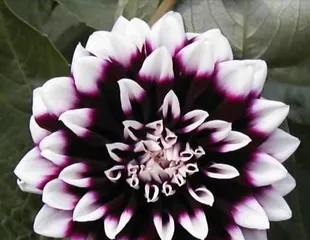Abstract:
Are Dahlias Toxic? A Guide to Indoor Care Tips

As a beautiful indoor potted plant, dahlias are loved by many plant enthusiasts. However, the question of whether dahlias are toxic has been a topic of debate. To ensure everyone's health and safety, this article will detail whether dahlias are toxic and provide indoor care tips.
I. Are Dahlias Toxic?
The roots, stems, leaves, and flowers of dahlias contain toxic components, primarily oxalic acid. Ingestion or contact with dahlia sap can cause adverse reactions such as vomiting, diarrhea, dermatitis, and in severe cases, it can be life-threatening.

II. How to Handle Dahlias Correctly?
To prevent accidental ingestion or contact with dahlia sap, we should handle them correctly. Place dahlias in areas where children and pets cannot reach them. When cutting dahlia flowers, wear gloves and wipe the cut with a damp cloth to reduce the risk of oxalic acid release. If repotting or pruning leaves, wear a mask and gloves and ensure good indoor ventilation.
III. Where Are Dahlias Suitable for Planting?
Dahlias are suitable for planting on balconies or in well-lit indoor areas. Additionally, dahlias are not cold-hardy, so they should not be placed near drafts or air conditioning vents.
IV. How to Control the Temperature and Humidity for Dahlia Care?
The suitable growing temperature for dahlias is 20°C to 25°C, with a relative humidity of 60% to 70%. In winter, a humidifier should be used to maintain indoor humidity.

V. What Should Be Noted About Fertilizing and Watering Dahlias?
During the growing season, dahlias need a moderate amount of compound fertilizer and should be watered once a month. However, in winter, the watering frequency should be reduced, and waterlogging on the soil surface should be avoided.
VI. What Issues Need Attention During the Growing Period of Dahlias?
During the growing season, dahlias require special attention to prevent infestations of aphids and mites. If these pests are found, spray the leaves with water in the evening to eliminate them. Furthermore, if the leaves of the dahlia turn yellow or curl, it may be due to unsuitable environmental temperature or humidity, which needs to be adjusted promptly.
VII. How to Propagate Dahlias?
Dahlias can be propagated by cuttings or division. For cuttings, select healthy stem segments, place them in a humid environment to root, and then transplant them into potting soil. Division involves separating the dahlia's roots with scissors and replanting them in potting soil.
VIII. What Are the Varieties of Dahlias?
There are many varieties of dahlias, such as spider-type, cactus-type, and decorative-type. These varieties not only have vibrant colors but also diverse shapes, and can be chosen based on personal preference.
IX. What Is the Language of Dahlias?
The language of dahlias includes meanings such as love, joy, beauty, and purity. They are a great choice for gifts or decorating indoor spaces.
X. What Are the Beauty Tips for Dahlias?
To make dahlias more beautiful, we can use leaf spray to increase their shine, or add some mature organic fertilizer to the potting soil to improve their growth quality.
XI. What Is the Flowering Period of Dahlias?
The flowering period of dahlias is in spring and summer, lasting for about one to two months.
XII. What to Do If Dahlia Leaves Turn Yellow?
If the leaves of the dahlia turn yellow, it may be because the soil is too wet or too dry. At this point, we need to adjust the watering frequency and adjust the indoor humidity as needed.
XIII. What to Do If Dahlia Leaves Curl?
If the leaves of the dahlia curl, it may be due to unsuitable environmental temperature or humidity. At this point, we need to promptly adjust the indoor temperature and humidity to allow the dahlia to grow in a comfortable environment.
XIV. What to Do If Dahlia Stems Become Soft?
If the stem of the dahlia becomes soft, it may be due to overwatering or excessive fertilization. At this point, we need to reduce the frequency of watering and fertilization, and adjust the nutrient content of the potting soil.
XV.
As a beautiful indoor potted plant, the dahlia not only has ornamental value but also a certain degree of toxicity, requiring us to handle it properly. By understanding the suitable growing environment and care techniques for dahlias, we can help them thrive in a comfortable environment and bring more beauty to our home life.